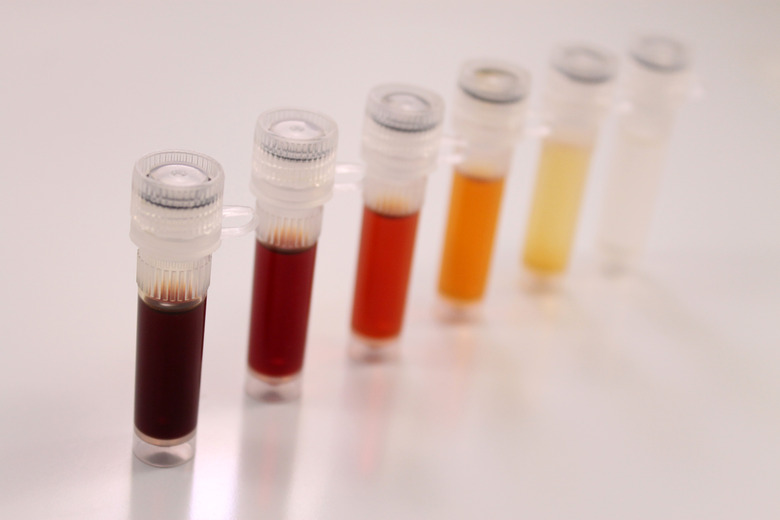The Advantages Of Serial Dilution
To ensure the accuracy of your results, chemical analysis requires you to calibrate your instruments. Some techniques operate and are applicable to a wide range of concentrations of the species in question. Preparing a series of solutions to generate a calibration curve of instrument response is fairly labor intensive and provides many points where errors may occur.
TL;DR (Too Long; Didn't Read)
You can use serial dilutions of a solution of known concentration to calibrate lab equipment and ensure its accuracy.
Errors
Errors
Making multiple calibration standards for your lab equipment means measuring out a solution of known concentration and diluting it to make a series of lower concentrations. You must exercise care at each step; any errors will increase through multiple dilutions. Since the point is to calibrate your instruments, errors in this process will compromise your final results; in fact, you could have serious problems with your data.
Serial dilution only requires that you measure your solution of known concentration one time. Each calibration standard that follows comes from the previous one. The absolute size of the error in each standard becomes smaller and smaller as the concentration drops.
Easier and Faster Preparation of Calibration Standards
Easier and Faster Preparation of Calibration Standards
Each calibration standard solution is prepared based on the previous calibration standard. The process involves taking a portion of the previous standard and diluting it with the solvent to obtain the next calibration standard. The errors introduced with each successive dilution drops proportionately with the solution concentration. Preparing a series of calibration standards by this method reduces the amount of required time. Most calibration standards span a large range of concentrations, so the accuracy of the calibration standard prepared increases.
Calibrations Solutions More Evenly Spaced
Calibrations Solutions More Evenly Spaced
The calibration standards should span the entire concentration range of the analysis. The more evenly spaced the calibration standards are over this range, makes the results of the analysis more reliable. Evenly spaced calibration standards are easier to prepare using serial dilution. Each successive standard uses a small portion of the previous standard, which is diluted by solvent to generate the next calibration standard in the series.
Greater Variability in Calibration Range
Greater Variability in Calibration Range
The dilution factor chosen for the series of calibration standards is achievable by using serial dilution. The progression of calibration standard concentration is always a geometric series. Consider the example of making the first standard at 1/3 the concentration of the known, the next calibrant would be 1/9th the concentration of the known and the following two calibrants formed are 1/27th and 1/81st. This becomes a much greater advantage when the span of the calibration standards must cover several orders of magnitude in concentration.
Cite This Article
MLA
Lancaster, Sean. "The Advantages Of Serial Dilution" sciencing.com, https://www.sciencing.com/advantages-serial-dilution-10028792/. 27 April 2018.
APA
Lancaster, Sean. (2018, April 27). The Advantages Of Serial Dilution. sciencing.com. Retrieved from https://www.sciencing.com/advantages-serial-dilution-10028792/
Chicago
Lancaster, Sean. The Advantages Of Serial Dilution last modified August 30, 2022. https://www.sciencing.com/advantages-serial-dilution-10028792/
